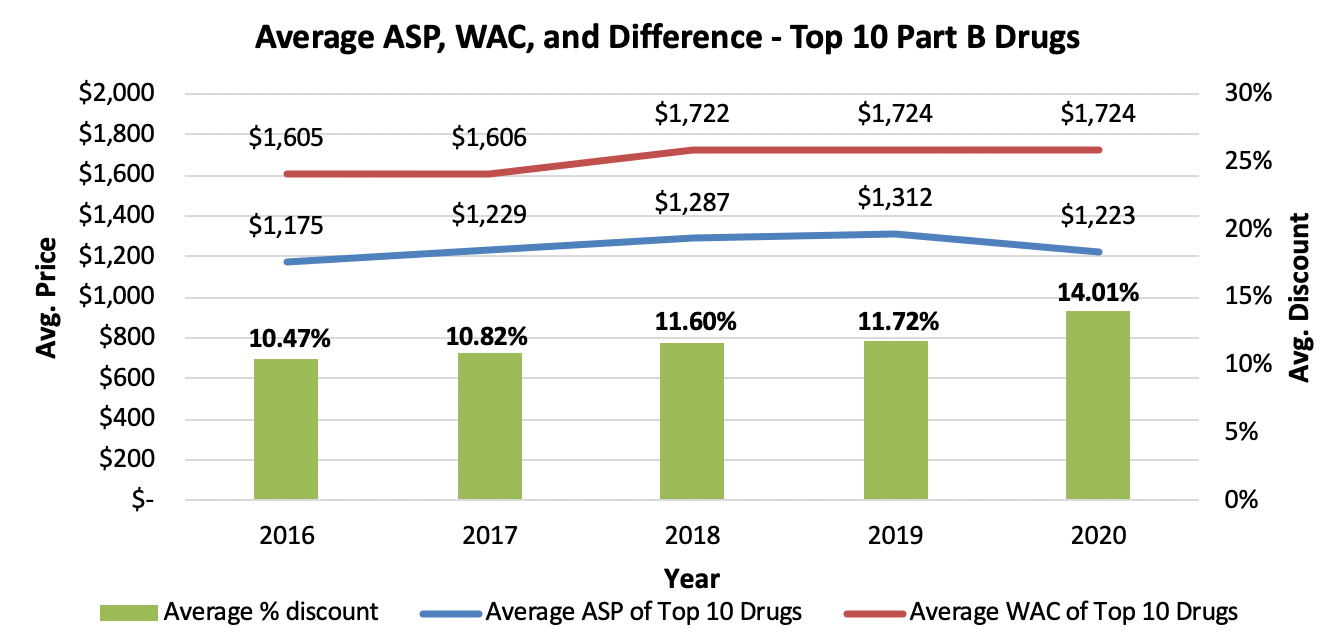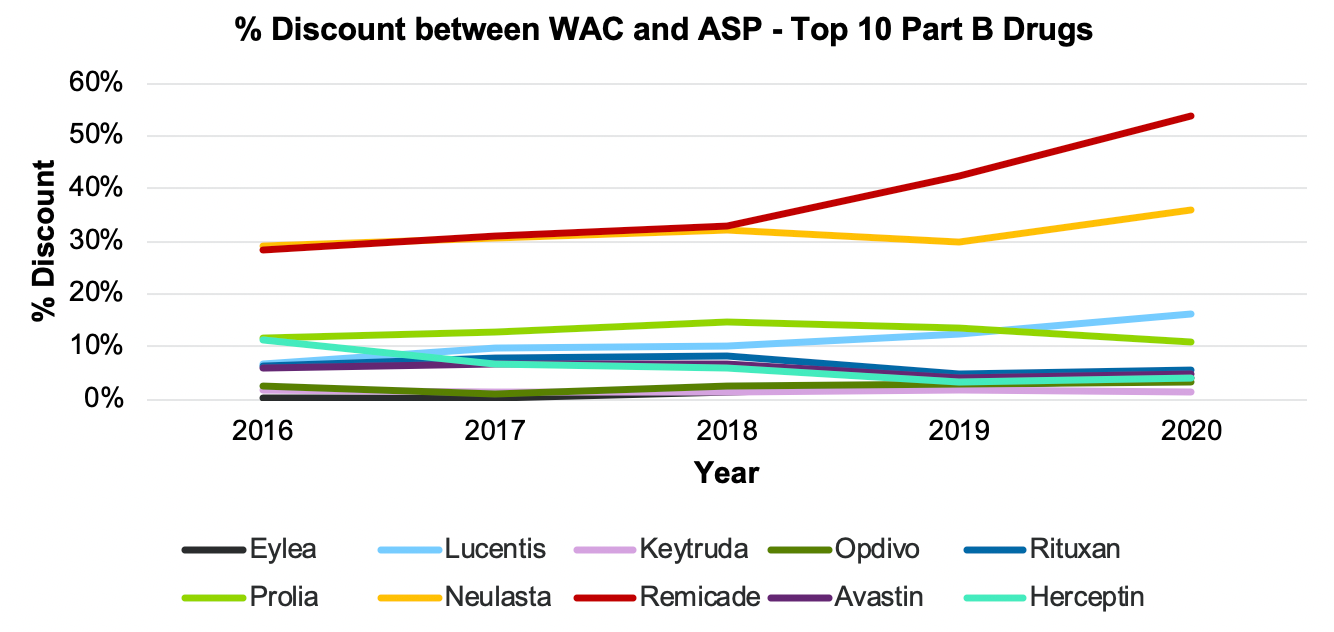The Myth of Skyrocketing Drug Prices: A Closer Look at The US Gross to Net Problem
While there has been an increase in discourse concerning drug pricing transparency in recent years, there is still a degree of misunderstanding. This is due to the healthcare industry's numerous stakeholders and their compelling interests. This research done by Guidehouse aims to clear the picture.
While there has been an increase in discourse concerning drug pricing transparency in recent years, the topic is complex due to continuously changing regulatory and commercial landscapes. The healthcare industry is composed of numerous stakeholders with potentially competing interests. Pharmaceutical manufacturers, insurance companies, and intermediaries such as drug distributors and pharmacy benefit managers (PBMs) all contribute to an amorphous drug pricing climate. As a result, there are some common misconceptions around how drug pricing and subsequent increases are truly manifested.
Increasing List Prices – A Misleading Story
List prices are publicly reported drug price, not inclusive of discounts or rebates, typically reported as Wholesale Acquisition Cost (WAC). In a retrospective analysis of branded drugs from 2007 to 2018, JAMA identified substantial increases in list and net price over time.1 While list prices increased at an average of 159% over this period, there was variability across therapeutic classes due to regulation and competition driving payer leverage to negotiate. In addition to class variability in list price increases, there was also variability in discounts by payer type. Across Medicaid claims, discounts increased from 40% in 2007 to 76% in 2018, while other payer types saw increases from 23% to 51%. In fact, while mean price increases were substantial, discounts offset an estimated 62% of list prices, indicating that rising list prices could reflect the growing manufacturer discount rates, rather than a change in the drug’s net price (price inclusive of rebates, discounts, returned goods, chargebacks, etc.)
The concept of a growing spread between list price and net price given rising discount rates is also defended by industry trend reports. According to Janssen’s 2018 Transparency Report2, there was an average discount rate of 47% across products, and an average net price decline of 6.8%. This spread between a drug’s list and net prices, coined the “gross to net bubble,” 3 the spread or difference between a drug’s list price and net price, is continuing to grow across the U.S. pharmaceutical industry. In addition, in the Sanofi’s 2019 Annual Report,4 the manufacturer characterized “skyrocketing” insulin prices as misleading given the fact that falling net prices make insulin significantly less expensive for payers. And in Merck’s 2019 US Pricing Transparency Report,5 the company cited an average discount rate of 43.7%, also contributing to a growing spread between list and net price.
Declining net prices, however, do not always indicate that patient out-of-pocket costs are also declining. Even with product competition in a highly rebated or discounted therapeutic category such as insulin, patient cost share is frequently still calculated based on a drug’s list price, or WAC. This dynamic uncoupling of list and net price results in situations where a patient’s out of pocket costs continue to rise while the payer’s drug cost continues to decrease.
A Second Look – Assessment of WAC vs. ASP
To further illuminate trends in drug pricing, we looked at the spread between list and net prices for the top 10 drugs based on Medicare spend. We first identified the top 10 drugs with the highest Medicare spend using CMS’ Part B Drug Spend Dashboard. Then, we pulled AnalySource’s longitudinal WAC pricing data and CMS’ annual ASP fee schedules for allowable payment rates for each of the drugs.6
Plotting the last 5 years of WAC (list price) and ASP (net price) from CMS’ fee schedules and AnalySource for each drug of interest helped understand the rates of increase for both list and net prices. The true allowable ASP was derived by subtracting 6% from the reported CMS ASP to account for overhead costs associated with furnishing the drug and sequestration. Finally, after converting both ASP and WAC prices into the same standardized unit of measurement for a 1-to-1-unit price comparison, the analysis resulted in comparable list and net prices per unit of the drug for the years 2016-2020.
The analysis shows that for the top 10 Part B drugs based on Medicare spend, the average 5-year compound annual growth rate for list price was 2.17% while the average 5-year compound annual growth rate for net price (imputed ASP) was 1.04% from the years 2016 to 2020. List price generally exceeded net price by 5-15% for 8 of the 10 drugs researched with average discount of 14% in January 2020. However, Neulasta and Remicade displayed greater spreads between list and net price with 36% and 54% discounts respectively in January of 2020. The discount for Neulasta increased by 6% between 2016 and 2020 and the discount for Remicade increased by 27% from 2016 to 2020. This suggests an increase in rebating and discounting strategies in the past 5 years possibly coinciding with losses of exclusivity, as list prices have remained constant for Neulasta and Remicade over the past 3 years.
Average ASP, WAC, and % Discount, Top 10 Medicare Part B Drugs (2016-2020)
Source: Guidehouse Analysis; CMS Average Sales Price Files [2016 – 2020], AnalySource Longitudinal WAC Data [2016 – 2020]

% Discount between WAC and ASP, Top 10 Medicare Part B Drugs (2016-2020)

Source: Guidehouse Analysis; CMS Medicare Part B Drug Spending Dashboard
While this trend is not surprising given the current climate, the variation seen within this small subset of drugs illuminates a stark contrast in how pharmaceutical manufacturers may approach contracting discussions– either with payers to gain preferred access or with providers through volume-based discounts to drive preferential utilization. Whereas some manufacturers and PBMs may favor starting at a higher list price and negotiating increased discounts and rebates (i.e. a ‘high WAC, high rebate’ strategy), patients and payers likely prefer more reasonable list prices that do not require increased discounts (i.e. a ‘low WAC, low rebate’ strategy) since patient co-insurance may be based on list prices in some scenarios. These competing interests is be further explored below.
A Multi-stakeholder Perspective – Do Competing Interests Leave Patients Out in the Cold?
Pricing can have a significant impact on key stakeholders in the value chain such as manufacturers, payers and providers working to service patients. Payers maintain the lack of transparency in discounts and premiums obscures the truth that while payers capture most of the discounts, all members benefit from greater control over the growth of premiums. But this control over the growth of insurance premiums is not as it may seem. Some premiums are still growing at a rate higher than wages, suggesting that patients are spending an increasing amount of income on health insurance. In 2019, the Kaiser Family Foundation reported that annual premiums increased 4% for singles and 5% for families while wages increased by 3.4% comparatively.7 Discounts pit the healthy insured patient against the uninsured, who pays list price, and the chronically ill who pays coinsurance on the list price while all technically receive lower premiums from their payers. For chronically ill patients that lower premium may not materially impact them much, as increased co-insurance based on a rising WAC price may actively prohibit some patients from seeking the care that they require. As a result, the obscurity in prices and discounts can make it difficult for all patients to fully understand the extent to which they may be impacted by discounting practices.
Public perception of pharmaceutical spend growth is misinformed by a focus on list price instead of net price. Manufacturers recognize the lack of fairness in the current system as most discounts accrue to payers and PBMs but patients, especially the uninsured and chronically ill, do not receive their fair share. With an increasing amount of formulary decisions being made by a select few PBMs, they now operate as somewhat of a gatekeeper for the healthcare industry. PBMs have the negotiating leverage to increase their share of revenues without necessarily passing savings onto the patient.
So given the current pharmaceutical pricing environment, what exactly should manufacturers be focusing on? Thinking about the patient as the end-user can be rather convoluted with so many stakeholders and competing interests. When setting list prices for new drugs, manufacturers should investigate the financial burdens that will befall patients based on their co-pay or co-insurance. If possible, manufacturers should also emphasize engaging in open and transparent negotiations with both payers and PBMs. This can ensure that no stakeholder is being taken advantage of or exploited when it comes to revenue sharing. In theory, allowing all stakeholders involved to focus on adding value for patients may foster active partnerships, but with so many moving parts, execution will likely be challenging in practice. Consistent communication, collaborative information sharing, and demonstrated product value can all help to facilitate these partnerships, but all stakeholders must be willing to engage fairly and remain focused on the patient rather than their bottom line.
References
1 Hernandez, Inmaculada, and Alvaro San-Juan Rodriguez. “Changes in List Prices, Net Prices, and Discounts for Branded Drugs in the US, 2007 - 2018.” JAMA, vol. 323, no. 9, 3 Mar. 2020, pp. 854–862., doi:10.1001/jama.2020.1012.
3 Drug Channels Institute, https://www.drugchannels.net/2020/03/drug-channels-news-roundup-march-2020.html
7 Kaiser Family Foundation, http://files.kff.org/attachment/Report-Employer-Health-Benefits-Annual-Survey-2019
Authors
Chance Scott, Director of Life Sciences at Guidehouse, Erik Sabot, Managing Consultant at Guidehouse, and Kathryne Kirk, Senior Consultant at Guidehouse
The Misinformation Maze: Navigating Public Health in the Digital Age
March 11th 2025Jennifer Butler, chief commercial officer of Pleio, discusses misinformation's threat to public health, where patients are turning for trustworthy health information, the industry's pivot to peer-to-patient strategies to educate patients, and more.
Navigating Distrust: Pharma in the Age of Social Media
February 18th 2025Ian Baer, Founder and CEO of Sooth, discusses how the growing distrust in social media will impact industry marketing strategies and the relationships between pharmaceutical companies and the patients they aim to serve. He also explains dark social, how to combat misinformation, closing the trust gap, and more.